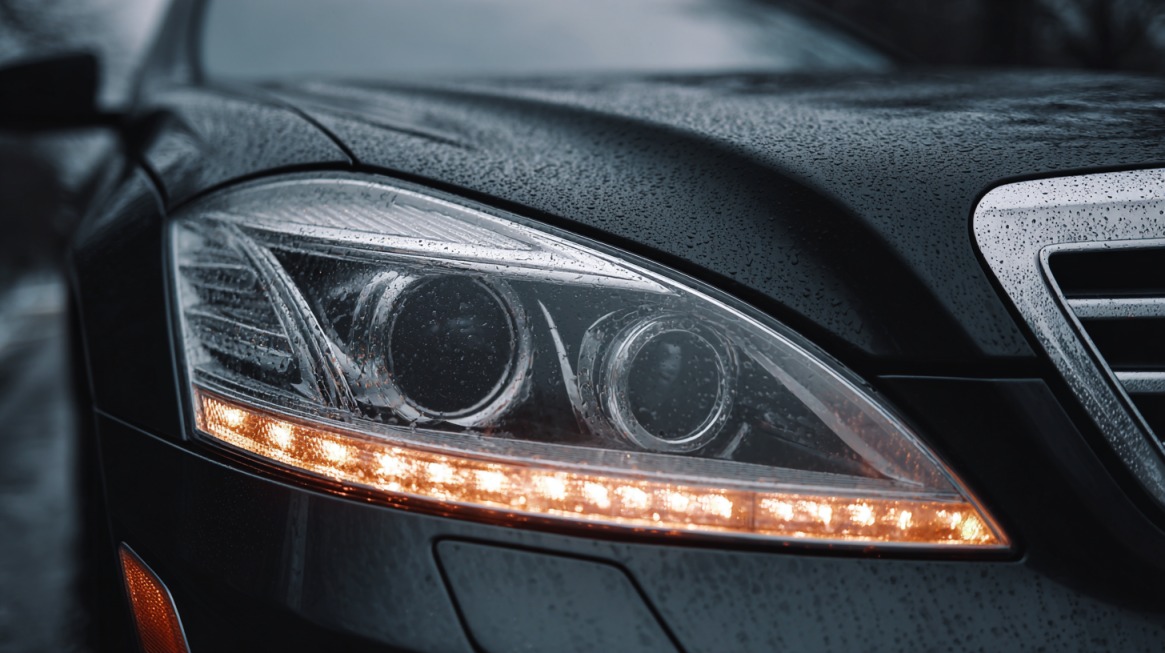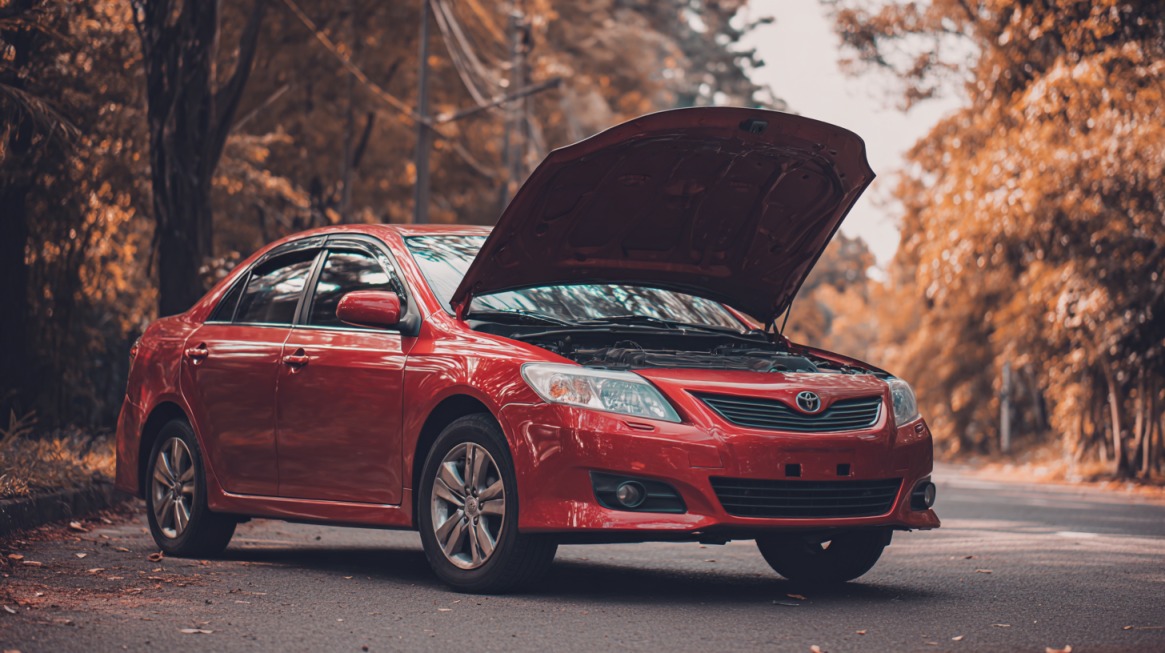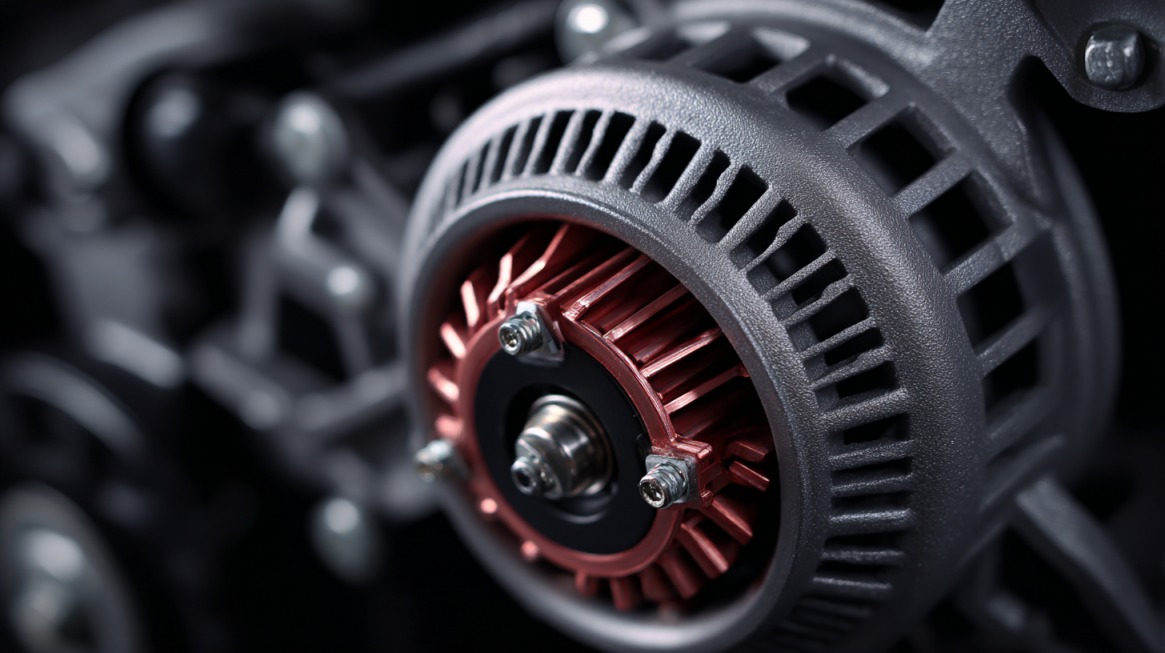An alternator plays a crucial role in keeping a vehicle’s electrical systems running smoothly by generating power and recharging the battery while the engine operates.
Early detection of alternator issues can prevent sudden breakdowns and expensive repairs.
Ignoring warning signs often results in stalling, dead batteries, or total electrical failure at inconvenient times.
Recognizing the symptoms quickly helps protect both your safety and your wallet.
1. Dimming or Flickering Headlights

Headlights that dim or flicker at night often provide the earliest sign of alternator trouble.
Drivers usually notice the inconsistency when switching between low and high beams or when accelerating.
Voltage irregularities reduce the ability of the headlights to maintain full brightness, making nighttime driving more dangerous.
Power demand from additional accessories, such as air conditioning or the stereo, worsens the effect.
- Headlights that dim when the engine idles but brighten when revved
- Lights that flicker during acceleration
- Uneven brightness across multiple headlights or interior lights
Ignoring such behavior can leave a driver with almost no forward visibility on dark roads.
Addressing this issue quickly prevents potential accidents and reveals strain before it escalates into more serious electrical failures.
2. Battery Warning Light on Dashboard
A glowing battery light on the dashboard confuses many drivers, who often assume the problem lies strictly with the battery.
In reality, alternator problems frequently trigger the same alert. Modern systems are designed to detect charging irregularities, so a voltage fluctuation sets off the warning light.
- Alternator undercharging the battery
- Alternator overcharging, which can damage the battery
- Loose or damaged wiring within the charging system
Driving with the light on puts the entire electrical system at risk. Failure to act can result in a sudden vehicle shutdown while on the road, leaving both driver and passengers stranded.
Prompt inspection of the alternator helps identify the real cause before the issue grows worse.
3. Dead or Frequently Dying Battery
A car battery that repeatedly dies despite recent replacement often points to alternator failure. Batteries rely on steady charging to store enough energy for reliable starts.
A malfunctioning alternator fails to provide that charge, leading to weak or completely dead batteries within days.
- Faulty diodes or rectifiers allowing power to leak while the car is off
- Insufficient voltage output during driving
- Overcharging, which damages internal battery cells
A vehicle that cannot hold a charge disrupts daily routines and can leave the driver stranded unexpectedly.
Checking both the battery and alternator together ensures that the real culprit is identified rather than simply replacing batteries unnecessarily.
4. Electrical Malfunctions
Modern cars rely heavily on electrical power for comfort and convenience features.
A weak alternator forces the system to prioritize essential operations such as ignition and engine control while reducing or cutting power to non-essential accessories.
Drivers may notice sluggish performance in various systems that once worked without issue.
- Power windows that slow down or stop mid-way
- Seat heaters that take much longer to warm
- Radio or infotainment systems that turn off unexpectedly
- Dashboard lights that flicker or dim
Such inconveniences are easy to dismiss but provide valuable warnings of weaknesses.
Left unchecked, these malfunctions progress into complete electrical failure, which compromises vehicle safety.
5. Difficulty Starting or Stalling

Starting problems often become noticeable when the alternator can no longer recharge the battery sufficiently.
A clicking sound is common as the starter motor struggles to draw power. Even if the vehicle eventually starts, the weak electrical supply may cause stalling during normal driving.
- Repeated need to jump-start the car
- Engine cutting off shortly after ignition
- Sudden stalling at stoplights or during highway travel
Such issues place drivers at risk of being stuck in dangerous traffic situations.
Addressing alternator performance at the first sign of difficulty starting saves both time and safety concerns.
6. Strange Noises (Grinding or Whining)
Mechanical wear inside the alternator often announces itself with grinding or whining noises.
Bearings inside the alternator may become worn, while a misaligned pulley or rotor imbalance can generate high-pitched sounds. These noises usually increase with engine speed.
- Worn or failing bearings
- Pulley misalignment or belt slippage
- Rotor contact with internal components
Such sounds should never be dismissed as harmless engine noise.
Continued operation while the alternator suffers mechanical failure can lead to sudden seizure, belt breakage, and secondary damage to other engine components.
7. Burning Smell or Overheating
@aaronsgarage Customer States! Burning smell! #ford #chevy #dodge #tech #mechanic #auto #repair #car #truck #diesel #fyp #xyzbca #foryou #powerstroke #duramax ♬ original sound – Aaron’s Garage
A burning smell within the cabin or engine bay often indicates overheating related to alternator failure.
Electrical wiring under strain or a slipping alternator belt produces excessive heat and a noticeable odor. Drivers may notice the smell, especially when idling or after long drives.
- Worn belt creating friction and heat
- Melted wiring insulation caused by electrical overload
- Excessive resistance within alternator circuits
Ignoring the smell risks more than just alternator replacement. Overheating may lead to engine fires or permanent damage to wiring harnesses, resulting in expensive repairs.
8. Slow or Non-Responsive Power Windows/Seats
Power seats and windows that move slowly or fail to respond altogether reflect weak voltage supply. Motors inside these features require steady current to operate effectively.
A struggling alternator cannot meet the demand, leading to sluggish or inconsistent operation.
- Windows that move at uneven speeds
- Seats that hesitate or stop midway through adjustment
- Multiple electrical accessories shutting down when used simultaneously
Such problems may seem like minor annoyances but often represent the early phase of more widespread electrical failure.
Addressing alternator performance at this stage prevents larger problems such as complete loss of essential vehicle systems.
Technical Alternator Component Failures
Alternator problems are not always caused by complete failure of the unit. In many cases, individual components break down and create issues that gradually worsen.
Recognizing these smaller failures early can help avoid full alternator replacement and reduce the risk of being stranded on the road.

Bad Diode or Rectifier Symptoms
Alternators generate alternating current, but vehicles require direct current for safe and consistent operation. Diodes or rectifiers handle this conversion, and once they fail, electrical systems behave erratically.
One of the most frustrating outcomes involves a battery that drains overnight even when the vehicle is not in use.
Ignoring this component issue forces the battery to shoulder the entire electrical load, often resulting in premature battery replacement that does not solve the underlying problem.
Faulty Voltage Regulator
Voltage regulators play a critical role in controlling the flow of electricity to the battery and electrical system. If the regulator fails, charging levels swing too high or too low, both of which are harmful to the vehicle.
Overcharging boils battery fluid and damages internal plates, while undercharging leaves the battery perpetually weak.
- Battery overcharging leading to swelling or overheating
- Dashboard lights glowing too brightly or dimming unexpectedly
- Electronics shutting down without warning due to low voltage
Leaving a regulator problem unchecked shortens the life of both the alternator and the battery, resulting in higher long-term costs.
Bad Alternator Bearings, Belt, or Pulley
Mechanical parts inside and around the alternator also cause problems when they wear down.
Bearings support the rotor, pulleys guide the belt, and the belt itself delivers power from the engine to the alternator.
Any failure in these components generates noise, vibration, and poor alternator performance.
- Grinding or whining noises during engine operation
- Vibration in the engine bay that increases with RPMs
- Belt slipping, squealing, or showing visible cracks
Small issues with bearings or belts are inexpensive to fix if caught early, but neglect leads to alternator seizure, broken belts, and damage to surrounding parts.
Testing & Diagnosis
Accurate diagnosis helps prevent unnecessary repairs and ensures the real problem is addressed. Drivers with mechanical experience often use a digital multimeter to check alternator output.
A healthy alternator typically shows between 13.5 and 14.5 volts while the engine is running. Readings below or above this range point to undercharging or overcharging.
Not everyone is comfortable working with electrical equipment, which is why professional testing remains the safest option.
Shops use load testers and advanced diagnostic tools to distinguish between a weak battery and a failing alternator.
Since the two often share overlapping symptoms, guessing can result in wasted money on parts that do not fix the issue.
What to Do If You Suspect a Bad Alternator

Drivers noticing symptoms of alternator failure should not postpone action. Problems often start small but quickly grow into expensive repairs or dangerous breakdowns.
Basic checks can rule out simple causes, but professional attention is usually required to confirm alternator failure.
Once confirmed, alternator replacement is the most reliable solution. Continuing to drive with a failing alternator places strain on the battery, starter motor, and delicate electronics.
Delays increase the chance of stalling on the road, damaging multiple systems, and facing higher repair costs.
Acting quickly protects both the vehicle and the driver’s safety.
Summary
Recognizing alternator problems early prevents breakdowns and costly damage to other vehicle systems.
Warning signs such as dimming headlights, stalling, or strange noises should never be ignored.
Acting quickly and consulting a trusted mechanic keeps your vehicle reliable and ensures peace of mind on the road.
Read More: Regenerative braking does more than just slow you down; it helps recharge your battery, cut down on wear and tear, and keep your car running stronger for longer. Find out how this simple feature can save you money and add years to your vehicle’s life.
